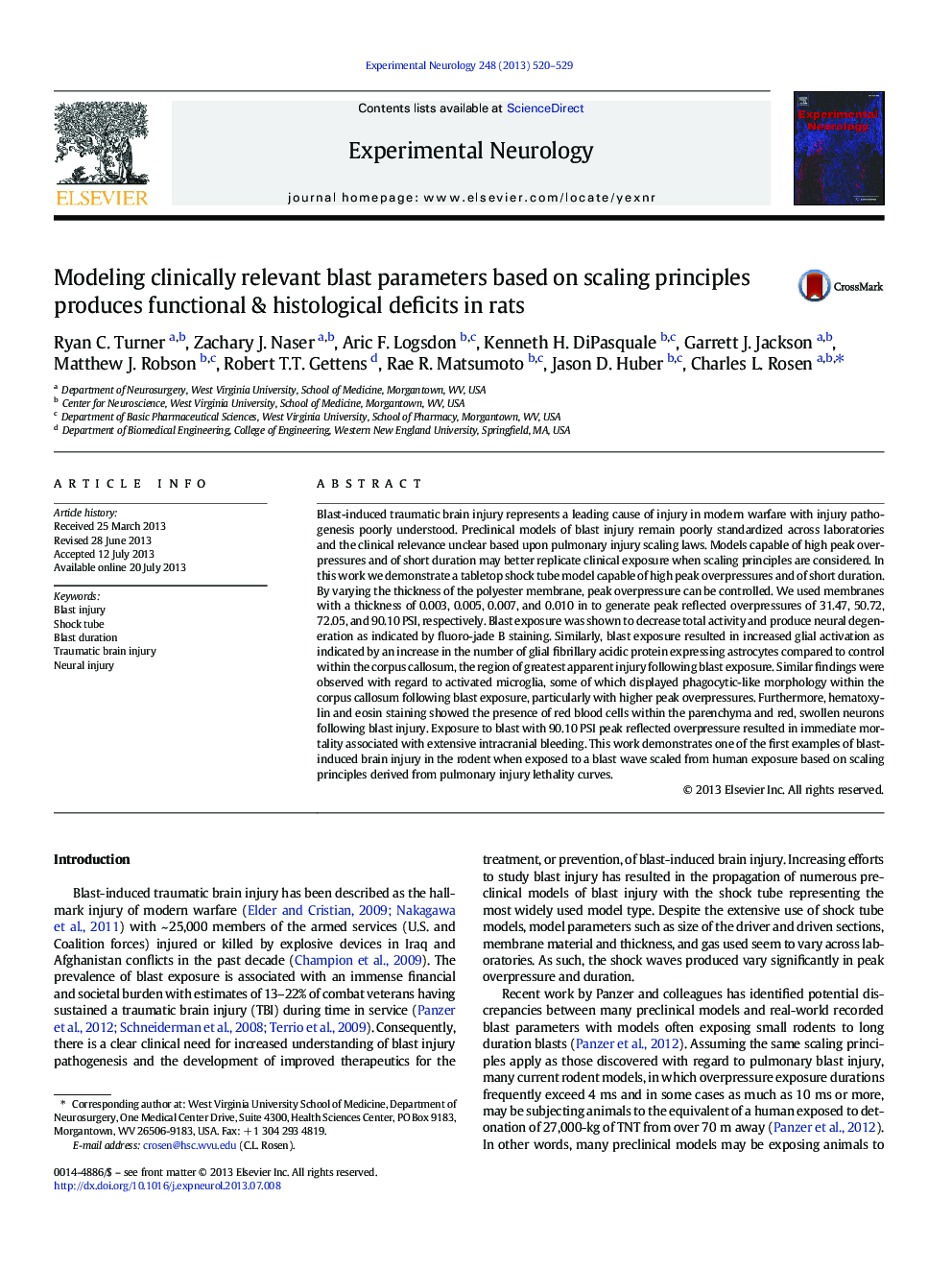| کد مقاله | کد نشریه | سال انتشار | مقاله انگلیسی | نسخه تمام متن |
|---|---|---|---|---|
| 6018145 | 1580184 | 2013 | 10 صفحه PDF | دانلود رایگان |
عنوان انگلیسی مقاله ISI
Modeling clinically relevant blast parameters based on scaling principles produces functional & histological deficits in rats
ترجمه فارسی عنوان
مدل سازی پارامترهای بالینی مربوط به انفجار بر اساس اصول پوسته شدن، نقص عملکردی و بافتی در موش صحرایی را ایجاد می کند
دانلود مقاله + سفارش ترجمه
دانلود مقاله ISI انگلیسی
رایگان برای ایرانیان
کلمات کلیدی
آسیب انفجار، لوله شوک، طول انفجار، آسیب تروماتیک مغز، آسیب عصبی،
موضوعات مرتبط
علوم زیستی و بیوفناوری
علم عصب شناسی
عصب شناسی
چکیده انگلیسی
Blast-induced traumatic brain injury represents a leading cause of injury in modern warfare with injury pathogenesis poorly understood. Preclinical models of blast injury remain poorly standardized across laboratories and the clinical relevance unclear based upon pulmonary injury scaling laws. Models capable of high peak overpressures and of short duration may better replicate clinical exposure when scaling principles are considered. In this work we demonstrate a tabletop shock tube model capable of high peak overpressures and of short duration. By varying the thickness of the polyester membrane, peak overpressure can be controlled. We used membranes with a thickness of 0.003, 0.005, 0.007, and 0.010Â in to generate peak reflected overpressures of 31.47, 50.72, 72.05, and 90.10 PSI, respectively. Blast exposure was shown to decrease total activity and produce neural degeneration as indicated by fluoro-jade B staining. Similarly, blast exposure resulted in increased glial activation as indicated by an increase in the number of glial fibrillary acidic protein expressing astrocytes compared to control within the corpus callosum, the region of greatest apparent injury following blast exposure. Similar findings were observed with regard to activated microglia, some of which displayed phagocytic-like morphology within the corpus callosum following blast exposure, particularly with higher peak overpressures. Furthermore, hematoxylin and eosin staining showed the presence of red blood cells within the parenchyma and red, swollen neurons following blast injury. Exposure to blast with 90.10 PSI peak reflected overpressure resulted in immediate mortality associated with extensive intracranial bleeding. This work demonstrates one of the first examples of blast-induced brain injury in the rodent when exposed to a blast wave scaled from human exposure based on scaling principles derived from pulmonary injury lethality curves.
ناشر
Database: Elsevier - ScienceDirect (ساینس دایرکت)
Journal: Experimental Neurology - Volume 248, October 2013, Pages 520-529
Journal: Experimental Neurology - Volume 248, October 2013, Pages 520-529
نویسندگان
Ryan C. Turner, Zachary J. Naser, Aric F. Logsdon, Kenneth H. DiPasquale, Garrett J. Jackson, Matthew J. Robson, Robert T.T. Gettens, Rae R. Matsumoto, Jason D. Huber, Charles L. Rosen,
